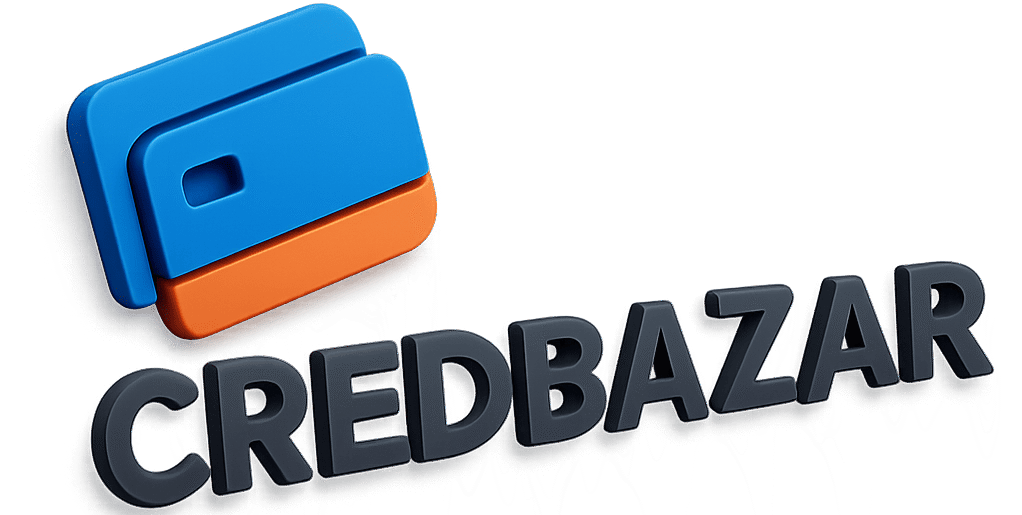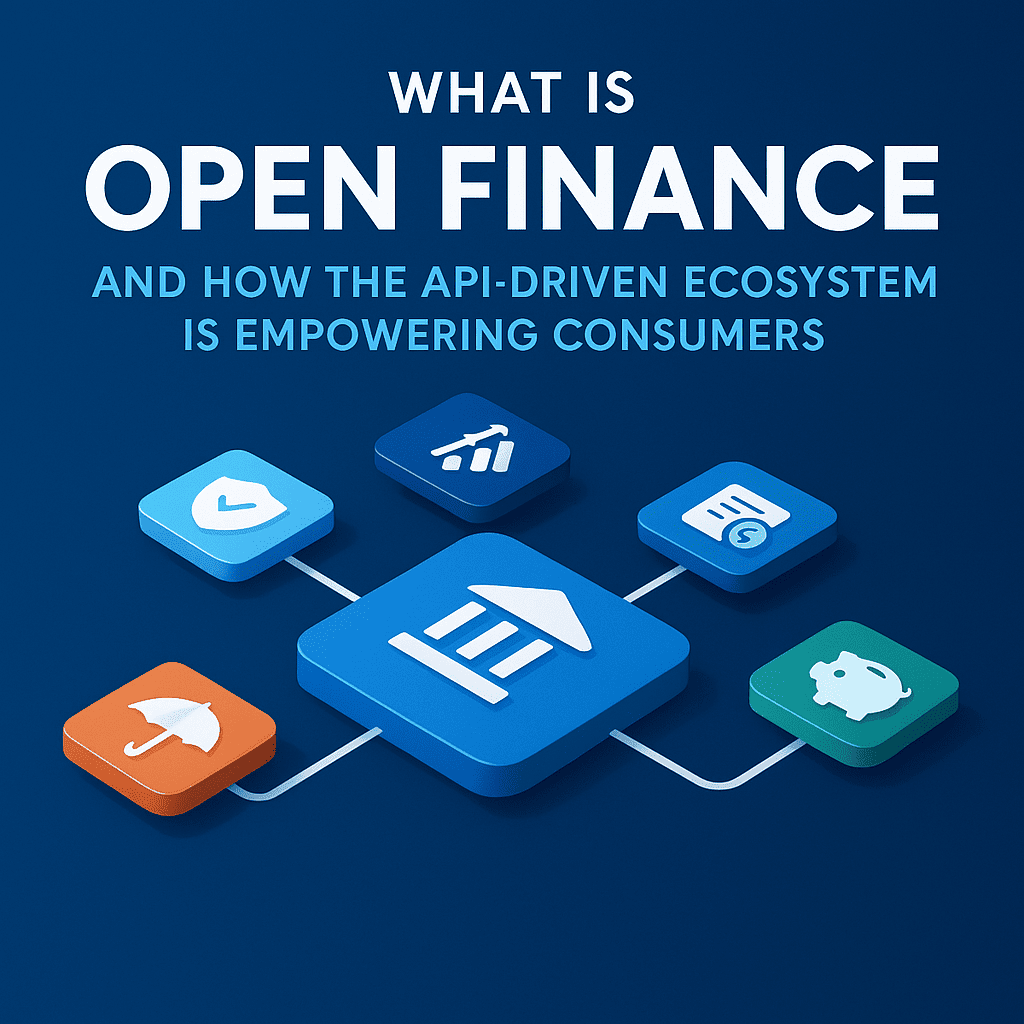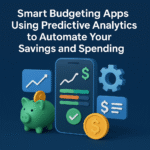In the last decade, we’ve seen how digital wallets, UPI, and online banking have completely reshaped the way we handle money. But now, a new revolution is here: Open Finance.
It goes beyond traditional banking and gives consumers the power to access and control their financial data across multiple services — thanks to APIs (Application Programming Interfaces).
🔹 What is Open Finance?
Open Finance is the next step after Open Banking. While open banking focused mainly on sharing data between banks and third-party providers, open finance expands this to a wider financial ecosystem:
- Insurance
- Investments
- Loans
- Pensions
- Personal finance management apps
In short, it enables you to connect all your financial accounts in one place and use them seamlessly with innovative apps and services.
📷 Suggested Image: An infographic showing “Open Finance Ecosystem” with icons for Banking, Insurance, Loans, Investments, and Pensions all connected to a central hub (via APIs).
🔹 How Does API-Driven Open Finance Work?
At the core of open finance lies APIs.
- APIs act as digital bridges between financial institutions and fintech apps.
- With consumer consent, APIs allow secure sharing of financial data across platforms.
- This data exchange unlocks personalized financial services.
👉 For example:
- A budgeting app can fetch all your spending data from different bank accounts.
- An investment platform can instantly verify your risk profile and suggest tailored funds.
- A lending app can check your income and creditworthiness without endless paperwork.
📷 Suggested Image: A flowchart showing Consumer → API → Bank / Insurance / Investment Platform → Fintech App.
🔹 Benefits of Open Finance for Consumers
- Greater Control Over Data
You decide who accesses your data and how it’s used. - Better Financial Decisions
With all accounts connected, apps can give deeper insights into your spending, savings, and investments. - Faster Services
Loan approvals, insurance claims, and investment setups become quicker through API-driven automation. - Personalized Recommendations
Financial apps can suggest better savings plans, lower-interest loans, or optimized investments tailored to you. - Inclusion & Accessibility
Even people without strong banking histories can access financial services through alternative data (like utility bill payments or mobile transactions).
📷 Suggested Image: A “before & after” graphic showing traditional banking (siloed accounts, paperwork) vs. open finance (all-in-one connected dashboard).
🔹 Real-Life Use Cases of Open Finance in 2025
- Personal Finance Apps: Tools like Mint or INDmoney integrate multiple accounts for holistic money management.
- Robo-Advisors: AI-driven investment platforms using API data to offer personalized portfolios.
- Smart Lending: Instant loan approvals based on verified transaction history.
- Insurance: Auto-adjusting premiums using lifestyle and financial behavior data.
📷 Suggested Image: A futuristic mobile app dashboard showing all-in-one view of savings, investments, insurance, and loans.
🔹 Challenges of Open Finance
While exciting, open finance still faces challenges:
- Data Privacy & Security: Consumers must trust that their data is protected.
- Regulation: Strong laws are needed to prevent misuse.
- Consumer Awareness: Many still don’t know how to safely use open finance apps.
🔹 The Future of Open Finance
By 2030, experts predict open finance will be the default financial system worldwide. Consumers will have complete visibility of their finances on a single screen, and switching between providers will be as easy as one click.
In India, with the rapid adoption of UPI, Aadhaar-based services, and account aggregators, open finance is set to empower millions who were previously excluded from advanced financial services.
📷 Suggested Image: A futuristic cityscape with digital financial connections symbolizing an interconnected open finance future.
✅ Final Thoughts
Open finance is not just about technology—it’s about putting the consumer at the center of finance. By giving people more control, choice, and convenience, the API-driven ecosystem is reshaping how we save, invest, borrow, and insure.
If you’re a consumer, this is the time to explore open finance apps — and if you’re a business, this is the future you can’t afford to ignore.
#OpenFinance #APIFinance #Fintech #OpenBanking #DigitalBanking #ConsumerEmpowerment #FintechTrends #FinancialInclusion #FutureOfFinance #Finance2025



